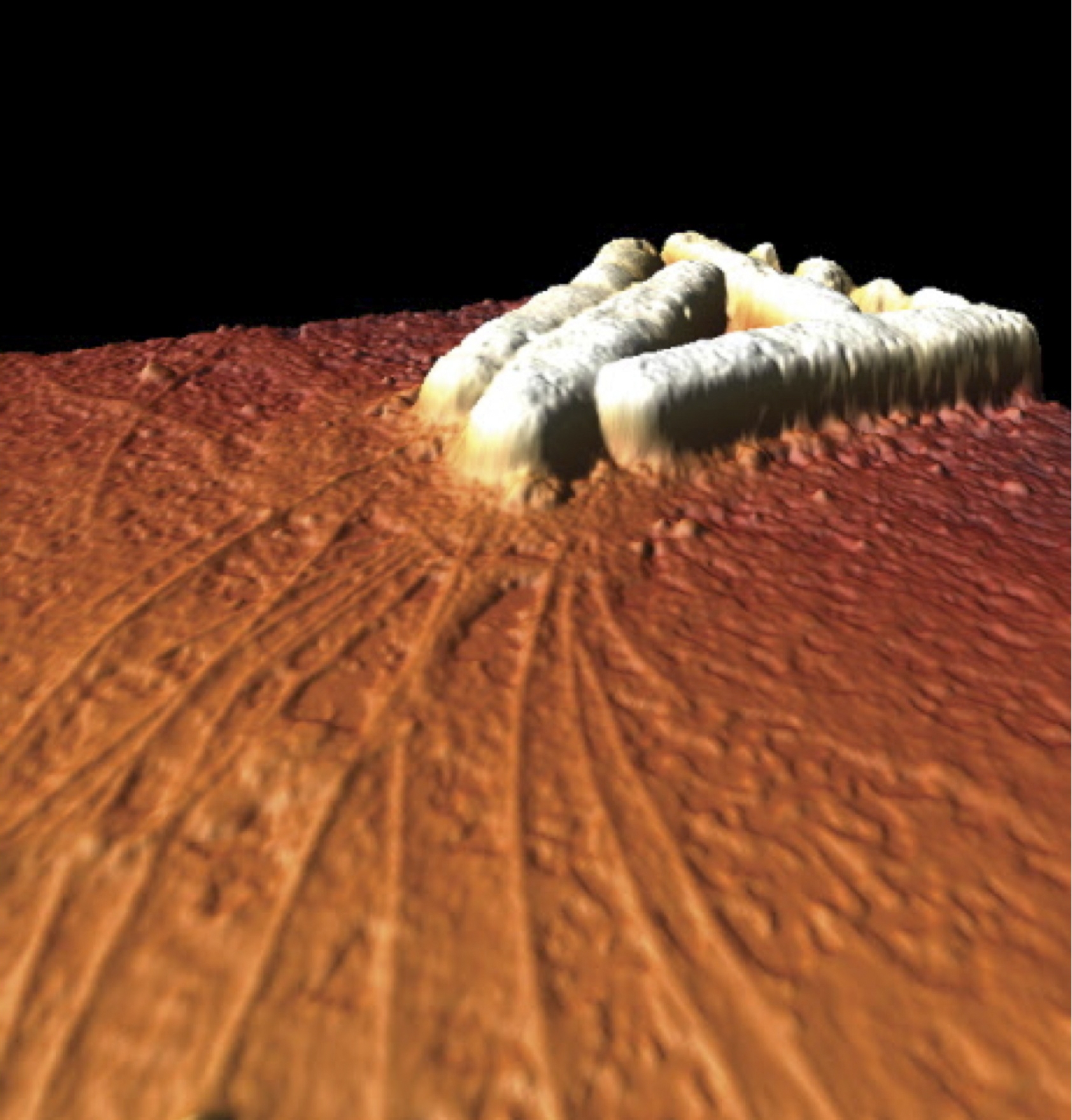The connection between M. xanthus, lubricants, and earthquakes

Myxococcus xanthus is a prototypical single-celled organism with complex social organization. It is a proteobacterium which is capable of collective organization into a swarm; this has been described as the bacterial equivalent of a wolf-pack, optimized for predatory feeding. M. xanthus also has a developmental program that allows cells to self-organize into macroscopic fruiting bodies composed of hundreds of thousands of cells, in order to ensure survival under starvation conditions. The characteristic social (‘S’) motility mechanism of M. xanthus is mediated by type IV pili (TFP), linear actuator appendages which propel the bacterium along a surface via extension/retraction cycles, and which are known to bind to secreted exopolysaccharides (EPS). However, how M. xanthus manages to use this TFP-EPS technology, which is common to many bacteria, to achieve its unique coordinated multicellular movements in S-motility, or how such motility leads to their unique social organization, has been a long-standing puzzle.
We engage this problem by combining concepts from the study of earthquakes, the study of colloids, as well as the study of M. xanthus. M. xanthus motility is known to be excruciatingly slow, and is usually studied using time lapse microscopy. We do the opposite; we examine the motion of M. xanthus cells on a surface using a high speed camera, and analyze the results using high-resolution particle tracking algorithms, which allows us to observe the dynamics of S-motility on a broad range of time scales and length scales. Surprisingly, we find that the movements we observe in M. xanthus are quantitatively described by the same mathematics developed for understanding earthquakes. Both exhibit critical behavior, which is characterized by a statistical hierarchy of discrete ‘avalanche’ motions described by a power law distribution over orders of magnitude. The measured critical exponents from M. xanthus are consistent with the subset measurable from earthquakes. Interestingly, a Lyapunov exponent analysis suggests that at least some of the EPS from M. xanthus is highly branched. Such molecular architectures, which are common for high-efficiency lubricants (such as synthetic motor oils) but are rare in bacterial EPS, may be the enabling factor for S-motility: We show that the TFP of leading ‘locomotive’ cells initiate the collective motion of follower cells, indicating that that lubricating EPS may alleviate the force generation requirements on the lead cell and thus make S-motility possible. In other words, even though the prevailing wisdom in the field regards EPS as a kind of molecular glue, it is actually also a kind of lubricant that enables complex social behavior. These results show that a seemingly trivial evolutionary change, in our case the architecture of the secreted exopolysaccharides, can lead to a drastic and qualitative difference in the social behavior of micro-organisms.